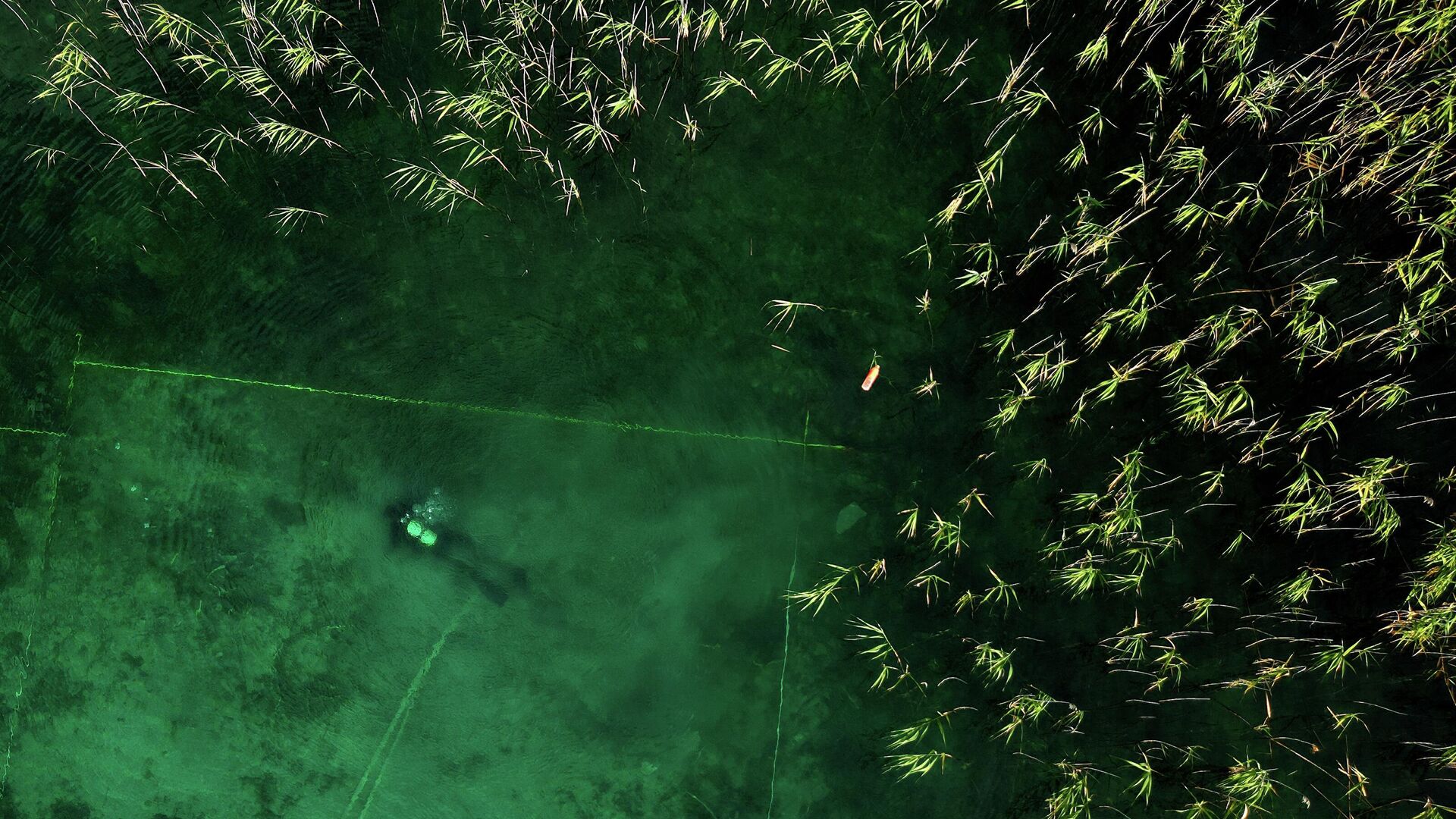https://sputnikglobe.com/20230814/europes-oldest-stilt-village-unearthed-beneath-lake-ohrid-1112596341.html
Europe's Oldest Stilt Village Unearthed Beneath Lake Ohrid
Europe's Oldest Stilt Village Unearthed Beneath Lake Ohrid
Sputnik International
In an archaeological discovery, researchers have revealed Europe's earliest known stilt village beneath the tranquil waters of Lake Ohrid, often dubbed the "Pearl of the Balkans."
2023-08-14T22:41+0000
2023-08-14T22:41+0000
2023-08-15T00:57+0000
beyond politics
science & tech
balkans
history
ancient history
albania
https://cdn1.img.sputnikglobe.com/img/07e7/08/0e/1112596182_0:139:3204:1941_1920x0_80_0_0_879017155f18a6e089c62a2d89f0e941.jpg
Researchers have revealed Europe's earliest known stilt village beneath the tranquil waters of Lake Ohrid, and is now raising questions as to why its inhabitants fortified their homes behind a vast wall of defensive spikes.Led by professor Albert Hafner from the University of Bern in Switzerland, an international team of archaeologists spent the past four years excavating the submerged ruins at Lin on the Albanian side of Lake Ohrid. The stilt houses, built above the lake's surface or in areas frequently submerged, were home to an estimated 200 to 500 inhabitants.The excavation has uncovered a remarkable discovery: evidence suggesting the village was protected by thousands of spiked planks forming a defensive barrier. To construct the fortress, the villagers cleared a significant portion of the surrounding forest. However, the reasons behind the need for such extensive fortifications remain a puzzle for researchers.Albanian archaeologist Adrian Anastasi emphasized the meticulous nature of their research, conducted carefully to avoid damaging the site. The lush vegetation surrounding the area has made excavation a slow but necessary process.According to current findings, the village likely relied on agriculture and domesticated livestock for sustenance. Seeds, plants and animal bones discovered on-site provide clues about the villagers' diet and lifestyle. However, complete exploration and analysis of the site are expected to take up to 20 years before conclusive insights can be drawn.Each new excavation trip provides valuable data, helping researchers reconstruct the lives of the ancient Lake Ohrid inhabitants—shedding light on everything from their dwelling structures to their social organization. Hafner emphasized the importance of such prehistoric sites not just for the region but for all of southwestern Europe.
https://sputnikglobe.com/20230808/2000-year-old-panda-burial-unearthed-in-han-dynasty-tomb-by-chinese-archaeologists-1112450303.html
balkans
albania
Sputnik International
feedback@sputniknews.com
+74956456601
MIA „Rossiya Segodnya“
2023
News
en_EN
Sputnik International
feedback@sputniknews.com
+74956456601
MIA „Rossiya Segodnya“
Sputnik International
feedback@sputniknews.com
+74956456601
MIA „Rossiya Segodnya“
oldest european stilt village, what is the oldest stilt village in europe, lake ohrid, what is pearl of the balkans, balkans ancient history, oldest sites in albania, what are famous historic sites in albania
oldest european stilt village, what is the oldest stilt village in europe, lake ohrid, what is pearl of the balkans, balkans ancient history, oldest sites in albania, what are famous historic sites in albania
Europe's Oldest Stilt Village Unearthed Beneath Lake Ohrid
22:41 GMT 14.08.2023 (Updated: 00:57 GMT 15.08.2023) The site, located along the Albanian shore of Lake Ohrid, predates other lakeside villages in Europe by several hundred years. Radiocarbon dating places the remarkable settlement between 6000 and 5800 B.C., making it a key find in the field of European Neolithic history.
Researchers have revealed Europe's earliest known stilt village beneath the tranquil waters of Lake Ohrid, and is now raising questions as to why its inhabitants fortified their homes behind a vast wall of defensive spikes.
Led by professor Albert Hafner from the University of Bern in Switzerland, an international team of archaeologists spent the past four years excavating the submerged ruins at Lin on the Albanian side of Lake Ohrid. The stilt houses, built above the lake's surface or in areas frequently submerged, were home to an estimated 200 to 500 inhabitants.
"It is several hundred years older than previously known lake-dwelling sites in the Mediterranean and Alpine regions. To our knowledge, it is the oldest in Europe," said Hafner.
The excavation has uncovered a remarkable discovery: evidence suggesting the village was protected by thousands of spiked planks forming a defensive barrier. To construct the fortress, the villagers cleared a significant portion of the surrounding forest. However, the reasons behind the need for such extensive fortifications remain a puzzle for researchers.
Albanian archaeologist Adrian Anastasi emphasized the meticulous nature of their research, conducted carefully to avoid damaging the site. The lush vegetation surrounding the area has made excavation a slow but necessary process.
"Building their village on stilts was a complex task, very complicated, very difficult, and it's important to understand why these people made this choice," said Anastasi.
According to current findings, the village likely relied on agriculture and domesticated livestock for sustenance. Seeds, plants and animal bones discovered on-site provide clues about the villagers' diet and lifestyle. However, complete exploration and analysis of the site are expected to take up to 20 years before conclusive insights can be drawn.
Lake Ohrid, one of the oldest lakes globally and over a million years old, has played a crucial role in preserving these ancient artifacts.
Professional divers have assisted archaeologists in retrieving fossilized wood fragments and prized oak pieces, enabling the team to study the area's historical and environmental conditions through tree ring analysis.
Each new excavation trip provides valuable data, helping researchers reconstruct the lives of the ancient Lake Ohrid inhabitants—shedding light on everything from their dwelling structures to their social organization. Hafner emphasized the importance of such prehistoric sites not just for the region but for all of southwestern Europe.



